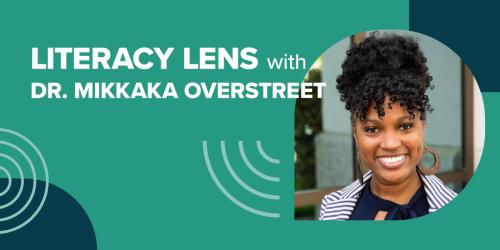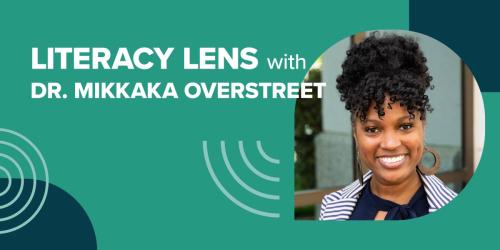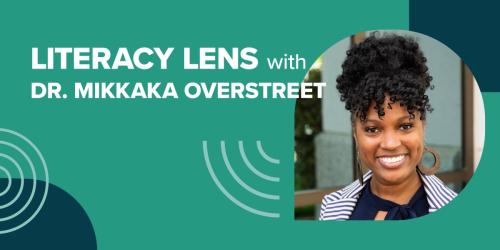How a District Equity Review United the Community

Like so many school communities across the country, Astoria School District in Oregon has made equity a strategic priority. But the district needed help deciding exactly where and how to begin putting equity into action for students, staff, and families.
With the help of Education Northwest, in 2023 Astoria engaged its community in a comprehensive equity review to identify key equity areas to prioritize in the years ahead. This homegrown process helped the small district unite behind a clear course of action.
What Is an Equity Review?
An equity review (sometimes called an equity audit) is an opportunity for a district, institution, or organization to examine where and how to make access, experiences, and outcomes more fair and just for everyone within a community. Typically, an equity review involves collecting data on people’s experiences and outcomes, analyzing the data to identify areas of strength and opportunities for growth, then prioritizing areas for action.
In Astoria, our equity review involved four key phases:
- Build a foundational plan and community advisory group
- Collect data and build trust with Astoria community members
- Identify key findings and priorities through a Collaborative Analysis Process
- Act on the priorities via technical assistance
A Strategic Foundation for Equity
Before getting started, Astoria School District wanted to make sure our equity review would align with existing efforts in the district. To accomplish this, Education Northwest’s equity review team used the district’s strategic plan for 2023–2027 to guide all aspects of the project.
They wanted our help answering the question: ‘What is equity in our district? And how do we get there?’
“Astoria’s strategic plan has three key goal areas: instructional development and engagement, relationship building, and workforce,” said Mikkaka Overstreet, equity review project lead. “In the district’s strategic plan graphic, the words ‘equity’ and ‘communication’ surround everything. The district made it clear that these priorities were also opportunities it wanted to improve upon.”
While equity was an essential component of the strategic plan, the district did not have a unified understanding of equity or how to achieve it. This experience is common among districts getting started with equity work—and a common reason districts ask Education Northwest to support them as an external reviewer.
“Administrators told us that when Astoria started having conversations about equity at the district level, they got caught up on just defining the word,” said Rachel Maller, a researcher on the equity review team. “Everyone was coming from different perspectives. They wanted our help answering the question: ‘What is equity in our district? And how do we get there?’”
Building Trust and Relationships in Astoria
Trust is essential to equity reviews: When community members trust the team leading the review, they can share honest feedback about what the district does well in terms of equity and which areas need more attention.
In a small district like Astoria, trust was especially critical—especially for our project team who came from out of town. Astoria School District includes four schools that serve just over 1,700 K–12 students.
“The Astoria community is very connected,” explained Rachel. “A lot of people were scared of being recorded, scared of notes being taken, because they didn't want what they said to get back to others in the school. You know, the people they see in the classroom are the same people they see every weekend at a restaurant or in the grocery store.”
One way our team began to build trust was by building relationships.
“When we first ran focus groups, we held them at the central administration building, thinking that would be an easy location,” said Rachel. “Later we realized that teachers were hesitant to go to the administration building when they had concerns to share about the administration. The next time our team visited, Mikkaka went to each school and held open office hours, so it was less intimidating for teachers to stop by and ask questions. We also held several virtual focus groups when we realized that some people would only feel comfortable in a totally remote setting.”
Our team also held affinity focus groups for teachers of color, LGBTQ+ teachers, and classified staff. These spaces offered participants the safety to be vulnerable about their experiences within the district.
Another way we built trust was involving Astoria community members in each step of the equity review process.
“We formed a community advisory group of about 20 people—including teachers and staff, parents, and students,” said Mikkaka. “The advisory group reviewed everything before it went out: surveys, focus group questions. That helped with the trust and buy-in: knowing that Astoria people were involved in every element of the planning process.”
By building relationships and trust, Education Northwest researchers were able to collect valuable data through focus groups and surveys with Astoria students, teachers, classified staff members, families, and administrators.
Engaging Community to Identify Key Findings and Priorities
A key component of the Astoria School District equity review was the Collaborative Analysis Process, or CAP. The CAP engages community members in analyzing data to identify key findings and priorities. Over the daylong process, Education Northwest researchers walk participants through the process of understanding data, validating individual findings, identifying key findings, and prioritizing key findings to act on. The process builds the district community’s capacity to work with data while recognizing the importance and value of community members’ lived experiences.
That was a huge learning experience and a really joyful experience—to be on the ground with people, looking at data and making meaning together.
Before the CAP, our researchers ran a preliminary analysis on data from focus groups, surveys, and the district. We collected the data in easy-to-read, visually engaging packets that aligned with the district’s strategic priorities.
“Everything we did aligned with the three key areas of the strategic plan,” said Pablo López Trujillo, an Education Northwest researcher. “From the questions we asked in focus groups and surveys to the data packets for the CAP—everything came back to instruction, relationships, and workforce.”
On the day of the CAP, 22 diverse community members from across the district came together to dig into the data and discuss what the information meant for the district. Our CAP team included students, parents (both English- and Spanish-speaking), teachers across grade levels, classified staff members, counselors, school principals, a school board member, and the superintendent.
“Our job was to not even to guide the participants, because they really did all the work,” said Pablo. “It was like we built a large, gentle fence around the data and let them wander wherever they wanted inside that fence. When they were done exploring, they told us where within that fence we should start digging deeper.”
“In teacher language, it was scaffolding,” added Mikkaka. “We couldn't just hand them a bunch of data and say, ‘Go!’ We made sure to present the data at a level anyone could comprehend—not too big and scary.”
Whenever disagreements arose, our researchers steered the conversation toward building consensus based on the evidence in front of the group.
“Consensus was not always possible: A couple participants in my small group had disagreements to the end,” Pablo said. “But, generally speaking, a strong majority agreed that each statement or finding encapsulated the different pieces of evidence we saw. And it's hard to disagree with evidence-based findings generated by people from within the community—another advantage of the CAP.”
“That was a huge learning experience and a really joyful experience—to be on the ground with people, looking at data and making meaning together,” added Rachel. “It's fascinating to see the findings be validated and have members of the community share more context behind it. And then you see their sense of ownership over the data and findings.”
By the end of the CAP, Astoria community members lifted up five priorities:
- Student inclusion and belonging
- Disproportionately high rates of modified diplomas issued to Latinx students
- Misalignment between student and teacher demographics
- A desire for more culturally diverse curriculum
- Consistent equity training across the district
Guiding Astoria’s Next Chapter of Equity Work
Today, Astoria School District is taking action on the community-identified priority areas with support from an equity-focused technical assistance team at Education Northwest.
“We don’t want to do equity reviews where we just give our partners a big old report and say, ‘Good luck!’” said Mikkaka. “We want to support enacting a plan, not just making reports that go on a website or check a box.”
At the end of March, teams from each school in the district began a journey of professional development, coaching, and communities of practice. These activities will build their capacity to improve equity across the strategic priorities identified through the CAP. This technical assistance will extend beyond the current school year for an additional two years.
The Future of Equity Reviews
Astoria’s equity review demonstrated how this community-driven research and engagement model can be a powerful tool for change in education.
“We had some mountains to climb over in this process—presenting the data in language and visuals that were balanced and easy to understand,” Pablo said. “Despite that, I was like, ‘Oh, my God, I want to do all the equity reviews all the time!’ It was confirmation that I'm in the right field.”
“Similar to Pablo, I found I love to do equity reviews,” said Rachel. “It's the engagement with the community, the conversations you have, the trust you build, and the ideas that come from that.”
“This team did a ridiculous amount of amazing work to help Astoria work toward their strategic plan goals,” said Mikkaka. “We brought together an intentional team of researchers and technical assistance providers for the review, and now we are excited to continue helping the Astoria team take action on the community’s findings.”


